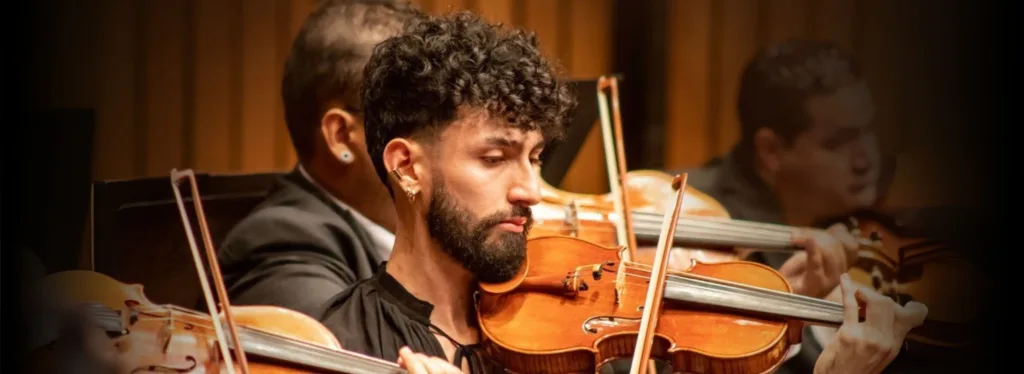Crónicas e historias
En el corazón de Camilo
La personalidad valiente y revolucionaria de Shostakovich, —un compositor ruso decidido a hacer oír su voz y que corría enormes riesgos para conseguirlo por los horrores del estalinismo— es la que cautiva a Camilo Martínez de 26 años de edad, artista, músico y queer, quien se desempaña como violinista supernumerario de la Filarmónica de Medellín.
Camilo vive en San Antonio de Prado con sus padres, estudia maestría en artes en la U. de A. y ama la versatilidad de su instrumento. Hablamos con él sobre su vida, sus cicatrices, sus sueños.
FILARMED: ¿Cómo fue su primera experiencia en la música?
CAMILO MARTÍNEZ: Fue con la banda sonora de Fantasía de Disney, tenía 5 años edad. Además, mis padres siempre me ponían un par de discos con música de Vivaldi y Beethoven; fue el sonido del violín lo que más llamó mi atención.
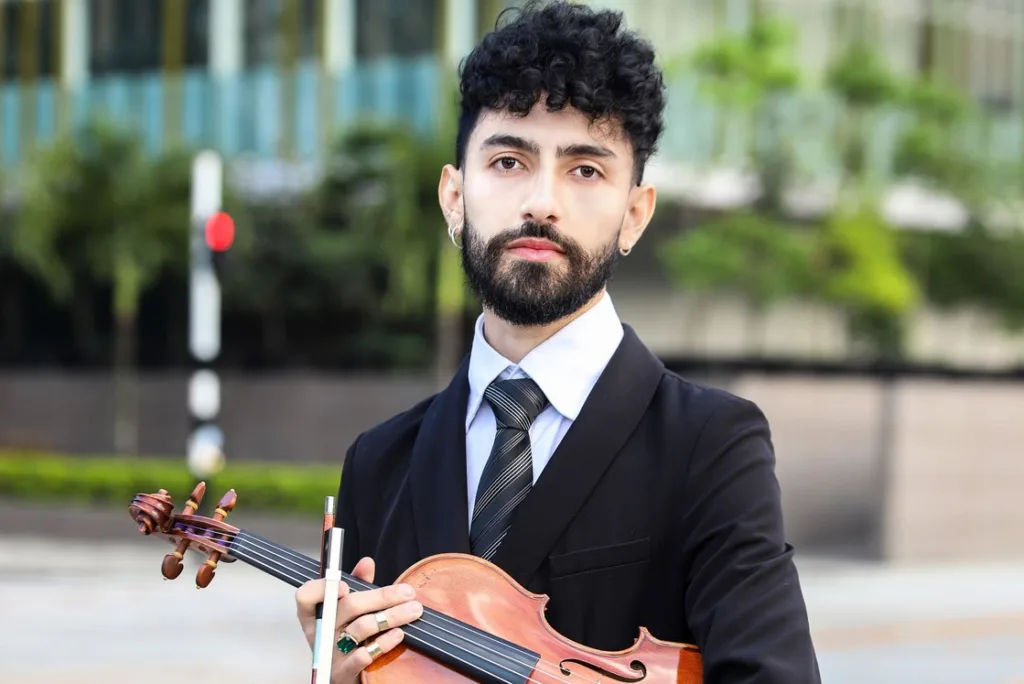
F: ¿Es verdad que un concierto didáctico transformó tu vida?
CM: Tenía 11 años de edad, cuando Filarmed visitó mi colegio, en el que mi mamá también es profesora. Nunca había tenido la oportunidad de ver una orquesta filarmónica en vivo. Yo quedé encantado. Recuerdo que mi mamá y yo nos acercamos a Manuel López, concertino asistente, para preguntarle cómo era el mundo de la música; ahí fue donde nos enteramos de esta posibilidad y dije que quería ser violinista.
F: ¿Por qué le gusta el violín?
CM: Por la versatilidad. Su capacidad sonora puede llegar a ser agreste pero también meliflua, tan armoniosa como incómoda. Y es que todo lo que incomoda a mí me fascina, es una cualidad, porque me hace replantear, acercar o alejar y estar atento, a la expectativa viendo diferentes perspectivas a cerca de la vida.
F: ¿Y si el violín fuera un ser humano…?
CM: Sería influyente, ambivertido y arriesgado.
F: ¿Cuál es tu compositor favorito?
CM: Shostakovich porque es símbolo de resiliencia, cicatrización y rebeldía, eso para mí es vital.
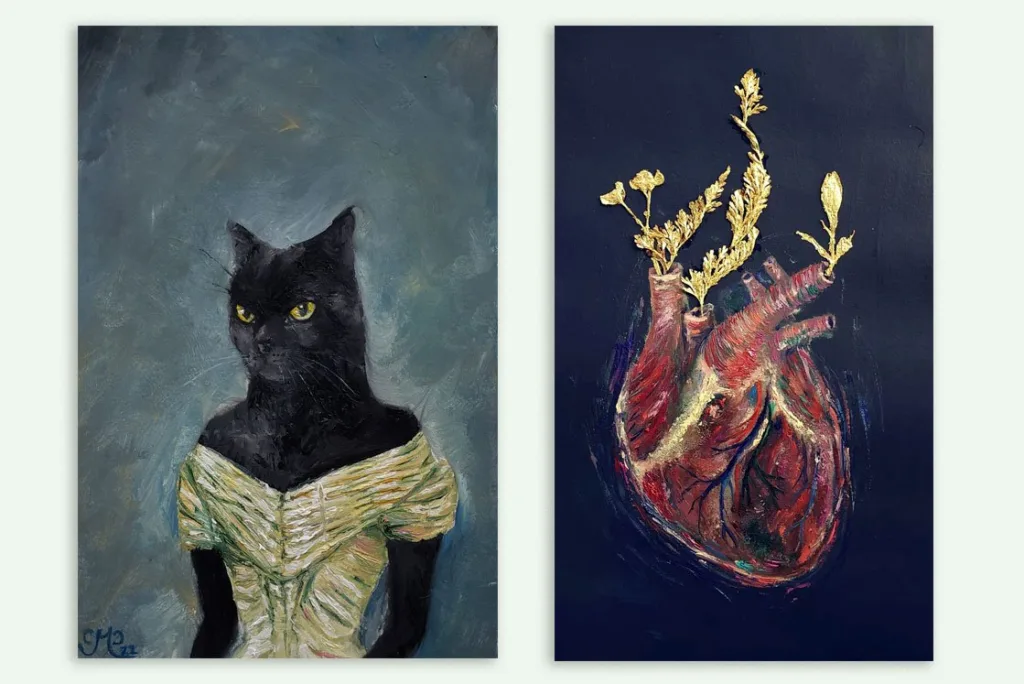
F: ¿Qué le apasiona hacer en sus ratos libres?
CM: Me encanta pintar. Cuando salí del pregrado yo quería seguir estudiando, pero no quise más violín de la forma tradicional, quería algo que me enriqueciera artísticamente. En la maestría pude explorar los intersticios de las artes, una experiencia en la que puedo descubrir hasta dónde llega la pintura, la poesía; ahí es donde uso mi tiempo libre para entenderme y entender cosas que la música no me permitiría por sí sola; por ejemplo, hablar sobre significado de la muerte de manera amplia, indagar en sus grafías, sus posibilidades, capas, lenguajes no verbales y matices luctuosos donde el violín me ha sido fundamental; y sin embargo busqué algo más allá en la experiencia estética, tanto visual y conceptual, como sonora.
F: ¿Qué significa la muerte?
CM: Es algo polivalente porque depende del tipo de muerte; puede llegar a ser liberación o puede ser la peor herida cuando eres la persona que queda y sufre esa pérdida. Para mí la vida se vive hasta que se pueda vivirla, de lo contrario es una liberación. En fin, la muerte nos hace replantear la vida y volver a darle un valor diferente, incluso me recuerda a Wagner al final de su ópera Tristán e Isolda, porque justamente cuando Tristán muere, Isolda entra en éxtasis, se transfigura y entra en otra dimensión, ni viva ni muerta, pero es feliz ya que por fin va a estar junto a su amado; ese concepto de nueva existencia me parece sumamente poderoso.
También me gusta resignificar el duelo. Hace siete años murió una prima con la que yo me sentía muy identificado, ella era mi reflejo; y fue esa pérdida la que afloró en mí muchos sentimientos para encontrarme con la pintura, la música y la poesía. El dolor deviene cicatriz y replanteamiento de vida.
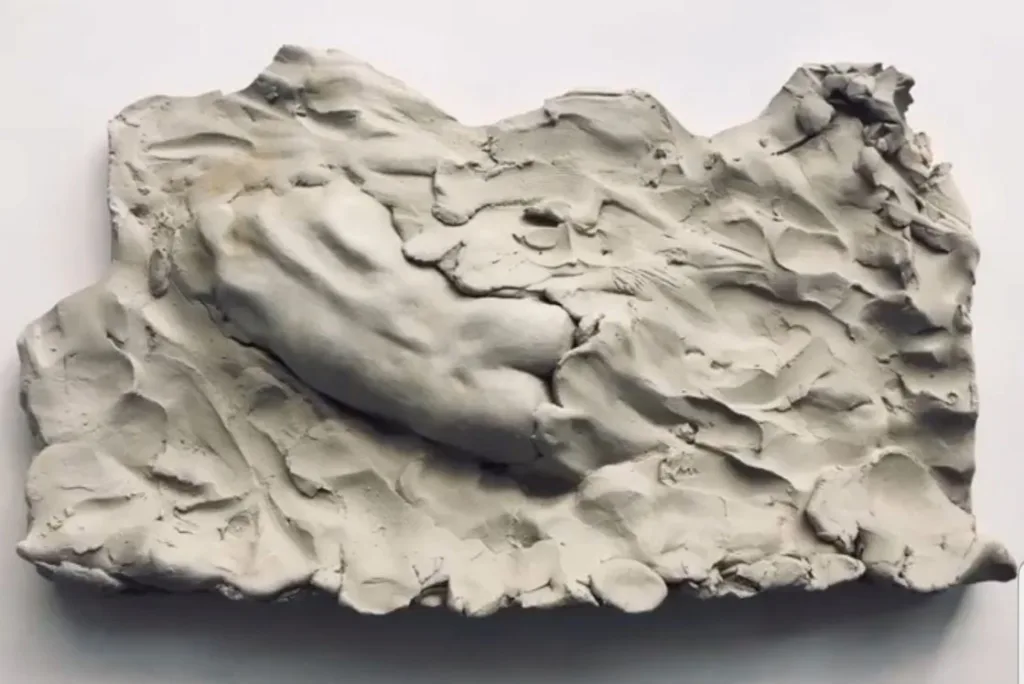
F: ¿Cómo manifiesta esa “liberación” a través del arte?
CM: Me encantan la pintura al óleo, la acuarela y el dibujo. Me gusta experimentar técnicas, creo que materiales como el sonido o la plástica, hablan por sí mismo a través de sus propias cualidades matéricas que a veces son cicatrices o texturas. Y son justamente esas cicatrices las que me permiten indagar la vida, solo hay que aguzar el ojo para notarlas y leerlas, y saber que la liberación se basa en encontrar significados propios que no tienen nada que ver con prejuicios o lo establecido, esto es hablar de cicatrización y de las texturas que nos marcan la piel, es celebrar la cicatriz.
“Las cicatrices son flexibilidad. Hago la analogía con una calle que en un principio está impoluta y plana pero con el tiempo va a pedir flexibilidad y va a generar una grieta en el pavimento porque la tierra siempre está en movimiento. Cuando esa grieta se genera habla de una necesidad de flexibilidad para adaptarse al medio. Para mí eso es una cicatriz, flexibilidad, adaptación y memoria”.
F: ¿Qué significa la belleza?
CM: La belleza no existe si no hay autenticidad. La belleza no es perfección. La autenticidad es la belleza, ver el objeto y la persona como son, con cicatrices e imperfecciones.
F: ¿Y el amor…?
CM: Es libertad. Querer y amar algo es de entrada saber que eso no te corresponde y no es de tu dominio. El saber amar esa belleza, de modo que me es extraña y ajena, es un sentimiento auténtico.

F: ¿Cuál es su mayor sueño?
CM: ¡Hacer una exposición de pinturas! Tengo dos parafinas que son mis favoritas, una se llama Ostinato, se trata de un corazón pintado sobre una parafina blanca; por el frente se le ven líneas muy tenues, y por el anverso se ve la forma del corazón de forma tenue. El resultado es la transparencia que nos habla de inmaterialidad, de las personas que ya no están.
Mi otra preferida se llama A la inmaterialidad, es una mano pequeña pintada en una parafina; el fallecimiento de mi prima y lo que me representó la muerte de ella es mi musa, ese sentimiento que habita en mí.
F: ¿Cuál es la obra más difícil que ha interpretado?
CM: El Concierto n° 2 para marimba de Živković me costó mucho interpretarlo, tanto que tuve que ponerme a estudiar sin violín, solo ritmo. ¡Imagínate cuadrar un rompecabezas en tu mente de piezas muy pequeñas! Lo interpreté en 2013 con la Orquesta Sinfónica de Antioquia.
F: ¿Cuál ha sido la situación más extraña en concierto?
CM: Tenía 16 años de edad y en un concierto en el Teatro Pablo Tobón Uribe, a última hora, me tocó hacer el rol de concertino, y aún más, tuve que hacer un solo para violín. ¡Fue algo muy abrumador!
Camilo vive sus semanas entre ensayos, conciertos y su ritual infaltable de la tarde, dormir. También ama ir al centro, siempre se inventa excusas para visitarlo; ama el cine de ciencia ficción y se declara fan del show de la Dany en la Plaza Botero, una artista de la calle, que mientras reorganiza los chécheres cuenta historias de amores trágicos y violentos, de familias disfuncionales y malandros, de sueños frustrados de fama y dinero, de cicatrices.
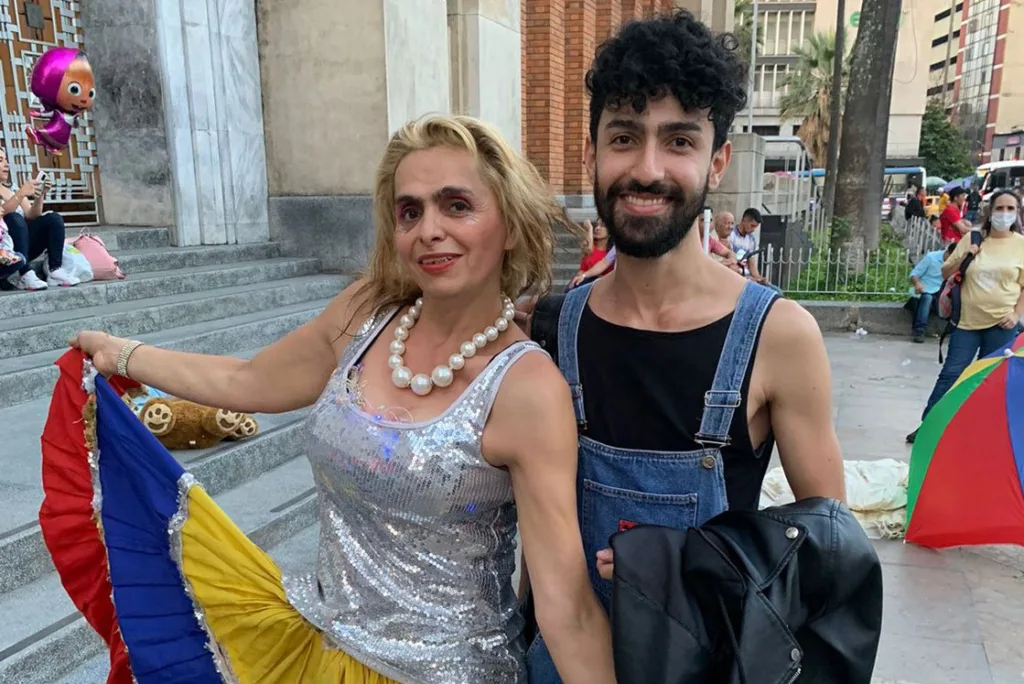

 English
English